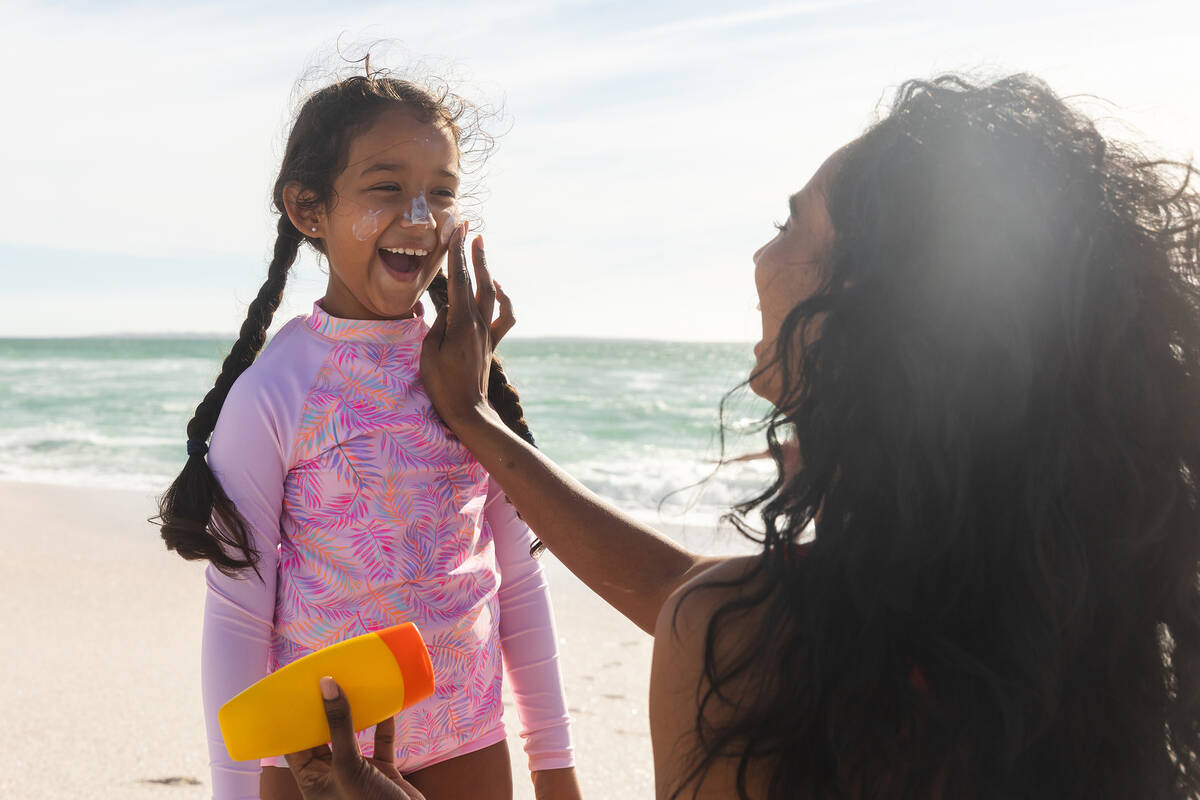Clearing up myths about skin cancer risk, sun protection
Question: I spent many a summer at the beach growing up. My mother always slathered me with sunscreen. Now, as a 30-year-old woman, sunscreen remains a part of my routine, regardless of the weather. Recently, I was surprised to learn that one of my friends — a young Black woman — never wears sunscreen. She said her darker complexion means she’s protected from sun damage and not at risk for skin cancer. Is this true? I thought all people were susceptible to skin cancer.
Answer: You are correct. Regardless of skin tone, anyone can get skin cancer. Although people with darker skin produce more melanin, which does have some additional sun defense, that does not mean darker-skinned people are fully protected from developing skin cancer.
People who have lighter or fair skin color are at increased risk of sunburn and skin cancer, but any person can experience sun damage and develop skin cancer. Sunscreen is important for all skin types and tones — and not just on sunny days.
Statistics indicate that people with darker skin have a lower rate of skin cancers, but studies have shown that they tend to be diagnosed later and at a worse stage, which is more challenging to treat.
How common is skin cancer?
Skin cancer is the most common cancer in the U.S. The American Academy of Dermatology estimates that 1 in 5 people will develop skin cancer annually. In general, exposure to ultraviolet light from the sun or tanning equipment increases the risk of developing skin cancer.
There are three primary types of skin cancer: basal cell carcinoma, squamous cell carcinoma and melanoma. Basal cell and squamous cell carcinoma are the most common and are estimated to affect more than 5 million people in the U.S. annually. Melanoma accounts for most deaths from skin cancer.
Research has found that melanoma prognosis and survival are worse for certain minority groups, especially Black and Hispanic people when compared with white people.
Myths and facts
There are many misconceptions when it comes to skin cancer risk and how to protect oneself from the sun. Two common falsehoods I hear are:
A suntan is safer than a sunburn: Similar to your friend’s belief that her darker pigment offers protection, one common misconception is that tanning is protective. Both sunburn and suntanning are processes that damage the skin and can lead to all forms of skin cancer. When our body is exposed to significant UV radiation — which can come from the sun, tanning beds or sunlamps — the skin increases production of a pigment called melanin to protect our skin cells from DNA mutations. This process is what creates a tan. Unfortunately, no UV-induced tan is safe. I recommend a spray tan if you are looking for color.
Only the sun can cause skin cancer: While spending time outdoors is a great way to reduce stress and get vitamin D, UV radiation may be present even on cloudy days. Though it is well known that UV radiation is one of the major culprits leading to skin cancer in people with light skin, it is probably not the major factor leading to skin cancer in people with darker skin.
Additional research is still needed, but people with darker skin have a higher risk of developing skin cancer in areas that are not sun-exposed, such as the palms of the hands and soles of the feet, inside of the mouth, and under the nails. As such, it is important to check all of those areas when checking your skin for concerning spots.
Protecting your skin
Practicing good sun safety and taking precautions to reduce UV exposure is important for everyone, regardless of skin color. Avoid being in the sun during peak hours (10 a.m. to 3 p.m.) or when the UV index is at a level 3 or higher. Seek shade when possible; wear sunscreen every day, even if you work indoors; and wear sun protective gear outdoors, including a hat, sunglasses, and long-sleeved shirts or pants.
With respect to sunscreens, look for a broad-spectrum product with a sun protection factor of 30 or higher. Recent research has shown that a higher SPF provides better protection.
The key to getting the full amount of SPF protection from sunscreen is applying it generously and frequently. Most people simply do not apply enough. For example, about 2 tablespoons of sunscreen, or about enough to fill a shot glass, is only enough for your face, your neck and the back of your hands. Apply sunscreen generously to the rest of your exposed skin too. Reapply sunscreen at least every two hours, more often if you’ve been sweating or swimming. Sunscreen may be water-resistant, but no sunscreen is waterproof.
Dr. Naiara Sbroggio Barbosa is a dermatologist with the Mayo Clinic in Jacksonville, Florida.


















